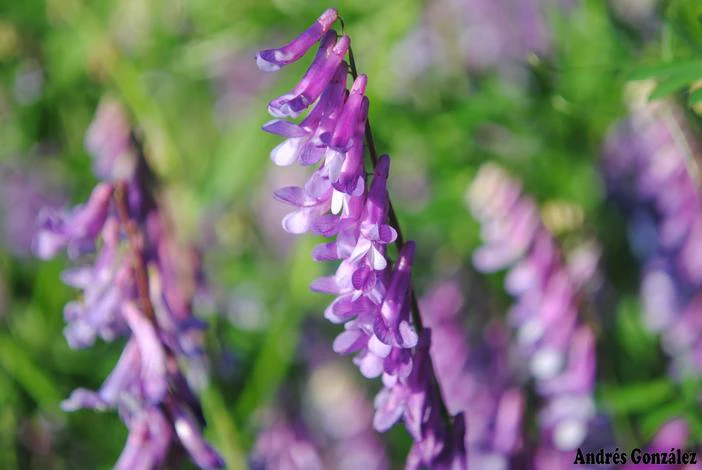Hairy Vetch
(Vicia villosa subsp. varia)
Hairy Vetch (Vicia villosa subsp. varia)
/
/

Andrés González
CC BY-SA 4.0
Image By:
Andrés González
Recorded By:
Copyright:
CC BY-SA 4.0
Copyright Notice:
Photo by: Andrés González | License Type: CC BY-SA 4.0 | License URL: https://creativecommons.org/licenses/by-sa/4.0 | Uploader: Nat (WDU) | Publisher: Wikipedia Commons


































Estimated Native Range
Climate Requirements for Hwaseong-si, Korea, Republic Of
| This Plant | Your Site | Plant Suitability for Your Location | ||
|---|---|---|---|---|
| • Precipitation | 6" - 140" | 50" | Aquatic | Aquatic |
| • High Temp. | 53°F - 102°F | 84°F | Your summer temperatures are normal for this plant. | Excellent |
| • Low Temp. | -16°F - 61°F | 17°F | Your winter temperatures are normal for this plant | Excellent |
This plant may not grow well at your location - your precipitation is too high.
Summary
Vicia villosa subsp. varia, commonly known as Hairy Vetch, is a fast-growing, annual or biennial herb native to Europe and Western Asia. It is often found in open areas such as grasslands and fields, as well as along roadsides. This legume typically reaches heights of 1-2 feet (30-60 cm) and has a sprawling growth habit. Hairy Vetch produces small, purple to violet flowers in the late spring to early summer, which are moderately showy and beneficial to pollinators. The plant also produces seed pods that are hairy when young.
Hairy Vetch is valued for its ability to fix nitrogen in the soil, making it a popular cover crop in agriculture. It is also used for erosion control and as forage for livestock. In gardens, it can be used as a green manure to improve soil fertility. Hairy Vetch prefers full sun to part shade and grows best in well-drained soils. It is drought-tolerant once established and requires minimal maintenance. However, gardeners should be cautious as it can become weedy and potentially invasive, particularly in the Pacific Northwest and some other regions outside its native range.CC BY-SA 4.0
Hairy Vetch is valued for its ability to fix nitrogen in the soil, making it a popular cover crop in agriculture. It is also used for erosion control and as forage for livestock. In gardens, it can be used as a green manure to improve soil fertility. Hairy Vetch prefers full sun to part shade and grows best in well-drained soils. It is drought-tolerant once established and requires minimal maintenance. However, gardeners should be cautious as it can become weedy and potentially invasive, particularly in the Pacific Northwest and some other regions outside its native range.CC BY-SA 4.0
Plant Description
- Plant Type: Herb
- Height: 1.5-3 feet
- Width: 2-3 feet
- Growth Rate: Rapid
- Flower Color: Purple
- Flowering Season: Spring
- Leaf Retention: Deciduous
Growth Requirements
- Sun: Full Sun
- Water: Medium
- Drainage: Medium
Common Uses
Bee Garden, Low Maintenance
Natural Habitat
Native to Europe and Western Asia, typically found in open areas such as grasslands and fields
Other Names
Common Names: Hairy Vetch, Vetch Woollypod, Winter Vetch, Woolly-Pod Vetch, Gorošek Šerstistoplodnyj, Ou Zhou Tiao Zi
Scientific Names: Vicia villosa subsp. varia, Cracca dasycarpa, Cracca varia, Cracca varia, Cracca villosa subsp. varia, Ervum varium, Vicia dasycarpa, Vicia dasycarpa subsp. glabrescens, Vicia dasycarpa subsp. pseudovillosa
GBIF Accepted Name: Vicia villosa subsp. varia